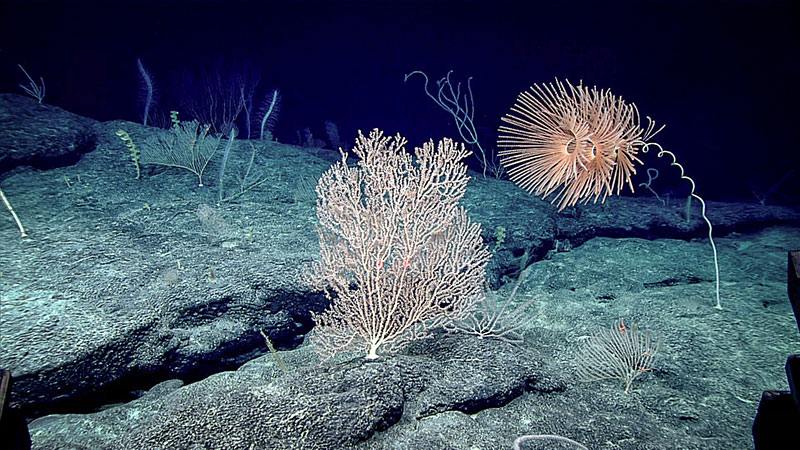-

Octocorals dominated the benthos at East “Wetmore” Seamount and included the stunning Iridogorgia and bamboo coral in the foreground. Image courtesy of the NOAA Office of Ocean Exploration and Research, 2017 Laulima O Ka Moana. Download larger version (jpg, 2.2 MB).
-

This Hexactinellid glass sponge was found at approximately 2,065 meters (~6,775 feet) with an associated undescribed species of Antipathes black coral. Image courtesy of the NOAA Office of Ocean Exploration and Research, 2017 Laulima O Ka Moana. Download larger version (jpg, 1.4 MB).
-
The sweeping spirals of Iridigorgia corals are not just beautiful to look at, they are also masterful design, allowing the coral to filter water for food from all directions. This coral was seen during Dive 10, while exploring the east portion of "Wetmore" Seamount. Video courtesy of the NOAA Office of Ocean Exploration and Research, 2017 Laulima O Ka Moana.. Download larger version (mp4, 30.5 MB).